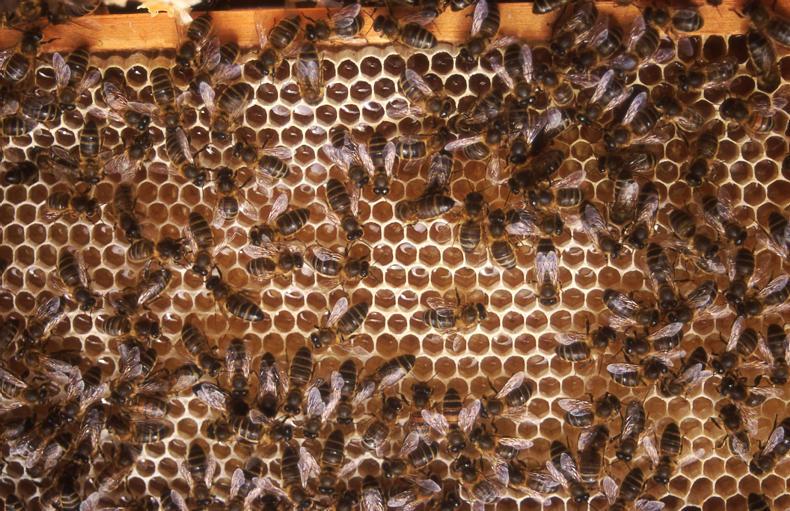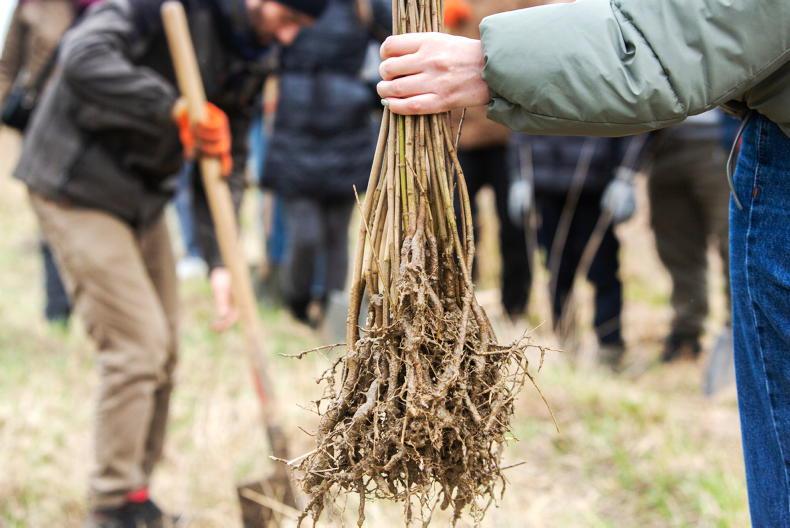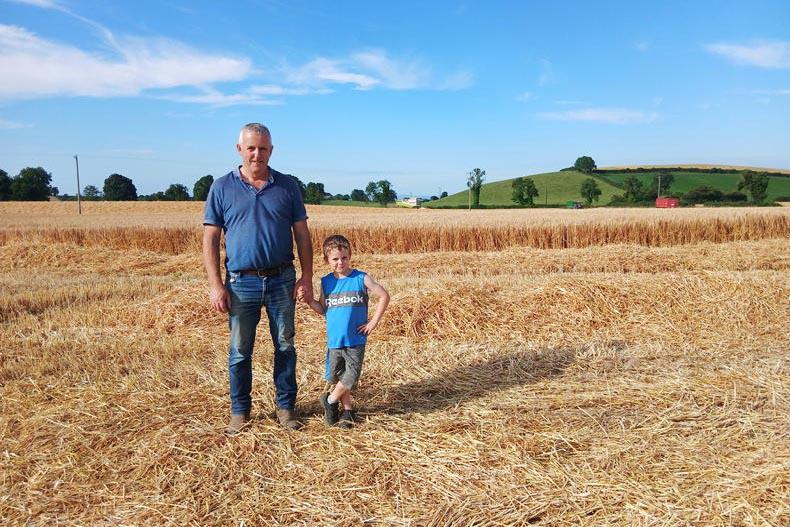While the general population basked in wonderful heat and sunshine, the honeybee worked all the hours she could muster, gathering nectar from a myriad of wild flowers.
The small white clover produced a lot of nectar before fading out from drought and the burning sun. The blackberry or briar produced nectar in large quantities despite the dry hot weather.
Cooling down
Honeybees will bring in a lot of water during hot weather and this will be used as cooling within the hive. It is possible that hives would have taken in up to one litre of water every day when temperatures were high. This water is held out on the bee’s tongue, while the colony fan their wings, creating an airflow across it, thus cooling the air. Honeybees are great at thermoregulation.
When nectar is flowing well and bees are taking it into the hive, they also create an airflow throughout the hive in order to reduce the moisture content to about 18.6% before finally packing it into storage cells. This airflow from the bee fanning creates a hum, which can be heard several feet from the hive.
During this process, one may often see hundreds of bees hanging out the front entrance to the hive, fanning their wings, driving cool air inwards, to be driven further around the inside by those occupying it. With the dry summer, much of the nectar collected would have required very little drying before it was sealed into the cells of the honeycomb, thus becoming honey.
Honeybees may often be seen sucking up water from what one might consider to be questionable water sources. Mud or anything which holds water may be visited by them. Observation will show that they are collecting water.
Good run of honey
Most beekeepers should be pleased with the honey crop this year. We had a great run from the sycamore in early May right up to the end of the blackberry at the end of July. The flavour of this year’s honey is great, having originated from a myriad of nectar-producing plants, both wild and cultivated.
Pollination brings about more seeds and hopefully this results in an increase in plant numbers. Mining and leafcutter bees were very active this summer. The combination of wild bees and honeybees bring about better pollination. Having had such a good summer hopefully bees did their pollinating and we will see the results with an increase in plant numbers, thus securing the future food supply for them and us.
No plants, means no bees and no bees, means no plants. Thankfully there is now greater awareness of the interrelationship
While the summer was, in the main, suitable for bees, one is very aware that dry hot weather has negative impacts, notably, water shortage, grass and crop stunting. Here’s to a good honey crop.
Read more
Keeping the honeybee alive
Beekeeping in winter
While the general population basked in wonderful heat and sunshine, the honeybee worked all the hours she could muster, gathering nectar from a myriad of wild flowers.
The small white clover produced a lot of nectar before fading out from drought and the burning sun. The blackberry or briar produced nectar in large quantities despite the dry hot weather.
Cooling down
Honeybees will bring in a lot of water during hot weather and this will be used as cooling within the hive. It is possible that hives would have taken in up to one litre of water every day when temperatures were high. This water is held out on the bee’s tongue, while the colony fan their wings, creating an airflow across it, thus cooling the air. Honeybees are great at thermoregulation.
When nectar is flowing well and bees are taking it into the hive, they also create an airflow throughout the hive in order to reduce the moisture content to about 18.6% before finally packing it into storage cells. This airflow from the bee fanning creates a hum, which can be heard several feet from the hive.
During this process, one may often see hundreds of bees hanging out the front entrance to the hive, fanning their wings, driving cool air inwards, to be driven further around the inside by those occupying it. With the dry summer, much of the nectar collected would have required very little drying before it was sealed into the cells of the honeycomb, thus becoming honey.
Honeybees may often be seen sucking up water from what one might consider to be questionable water sources. Mud or anything which holds water may be visited by them. Observation will show that they are collecting water.
Good run of honey
Most beekeepers should be pleased with the honey crop this year. We had a great run from the sycamore in early May right up to the end of the blackberry at the end of July. The flavour of this year’s honey is great, having originated from a myriad of nectar-producing plants, both wild and cultivated.
Pollination brings about more seeds and hopefully this results in an increase in plant numbers. Mining and leafcutter bees were very active this summer. The combination of wild bees and honeybees bring about better pollination. Having had such a good summer hopefully bees did their pollinating and we will see the results with an increase in plant numbers, thus securing the future food supply for them and us.
No plants, means no bees and no bees, means no plants. Thankfully there is now greater awareness of the interrelationship
While the summer was, in the main, suitable for bees, one is very aware that dry hot weather has negative impacts, notably, water shortage, grass and crop stunting. Here’s to a good honey crop.
Read more
Keeping the honeybee alive
Beekeeping in winter









SHARING OPTIONS